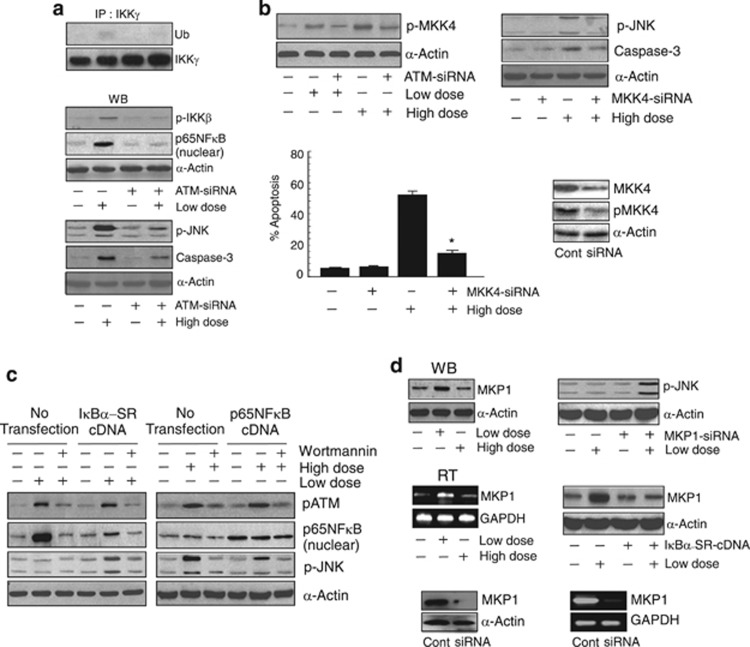Figure 3.
ATM in resistant cells steered DNA damage responses toward induction of NFκB or activation of JNK during low and high genotoxic stress, respectively. (a) Co-immunoprecipitation experiment was performed for determining the ubiquitination of IKKγ in ATM-siRNA transfected A549 cells in presence of low dose of cisplatin (upper panel). In parallel, the western blotting technique was employed to determine p-IKKβ, nuclear p65NFκB (middle panel), and phospho-JNK and caspase-3 levels were determined in ATM-siRNA transfected A549 cells in presence of high dose of cisplatin (lower panel). (b) In the same experimental set, p-MKK4 was also analyzed (upper left panel). This was followed by transfection of A549 cells with MKK4-siRNA where changes in the expression levels of p-JNK and caspase-3 were verified (upper right panel). Simultaneously percent cell death was determined by Annexin-V-/7-AAD-positivity (lower left panel). The effectiveness of MKK4-silencing was confirmed by western blot analysis (lower right panel). (c) A549 cells transfected with the IκBα-SR-/p65NFκB-cDNA were Wortmannin pre-treated before cisplatin treatment and were then analyzed for p-ATM, nuclear p65NFκB and p-JNK by western blotting. (d) Protein and mRNA levels of MKP1 in untreated/cisplatin-treated A549 cells were determined by western blotting and RT-PCR experiments, respectively. At the same time, the p-JNK and MKP1 levels in MKP1-silenced cells and IκBα-SR-overexpressed cells, respectively, were also determined. The efficacy of MKP1 knockdown was demonstrated both by western blot analysis and RT-PCR (lower panel). GAPDH and α-actin were used as internal controls. Values are mean±S.E.M. of five independent experiments in each case. *P<0.01 when compared with respective untransfected/normal sets

